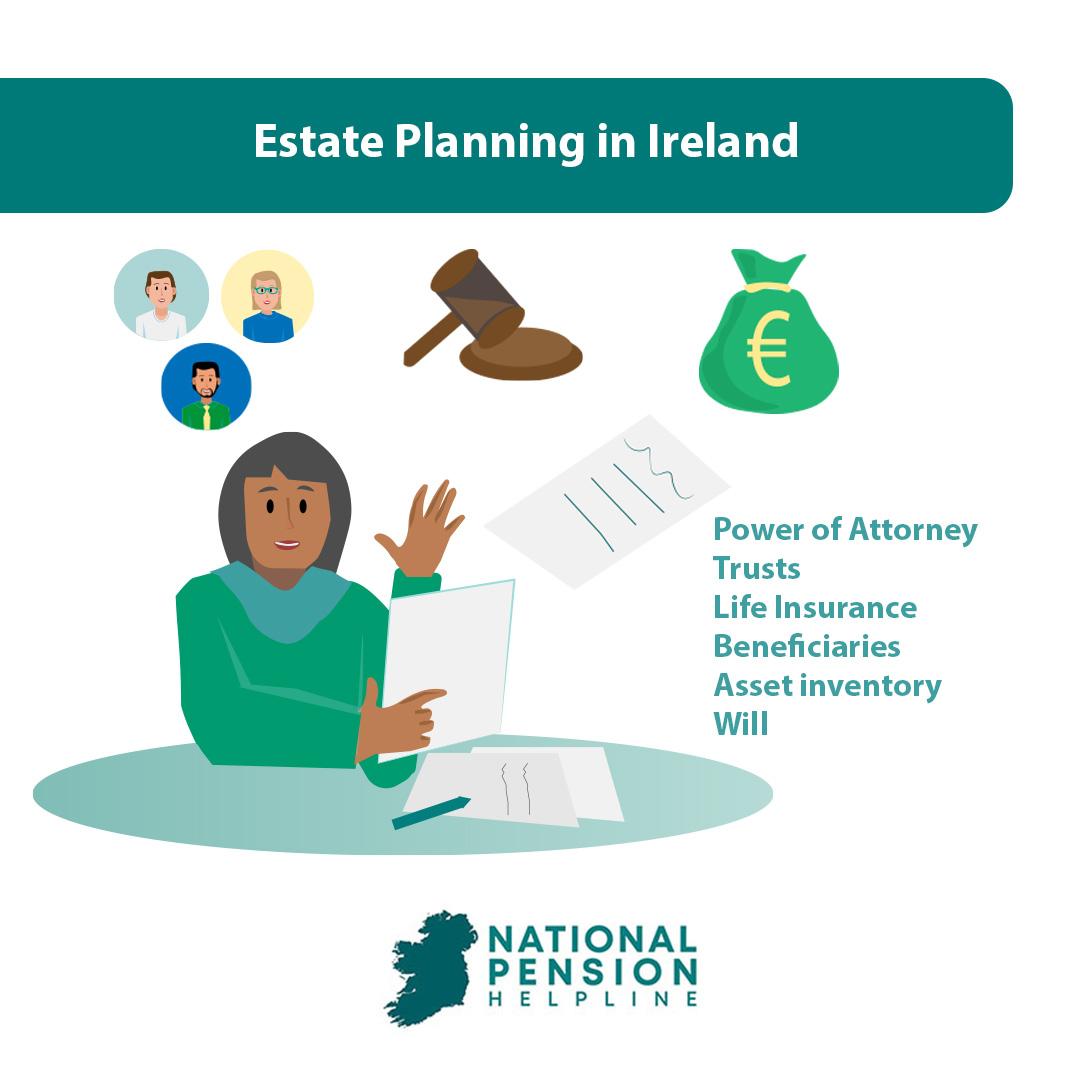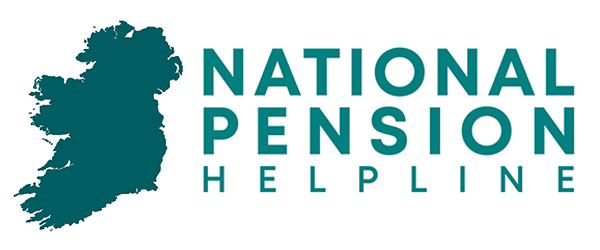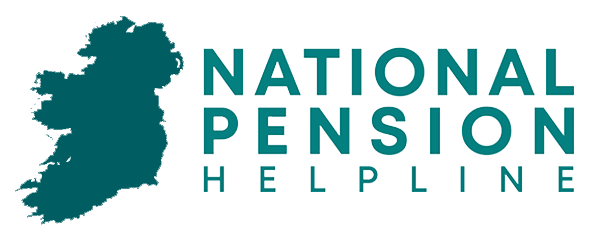Article disclaimer: Inheritance tax has been confirmed by Minister for Finance Jack Chambers to be subject to change as part of Budget 2025. As such, the details contained within this article will likely change post-October 1st 2024. Stay tuned for updates.
We’re all aware of the famous saying “in this world nothing can be said to be certain, except death and taxes” – and how true that is! But did you know that even the act of you dying has taxation implications for the loved ones that you leave behind? Ah the duality of life!
The relevant Irish tax which is applicable to the taxation of one’s estate upon death is known as Capital Acquisitions Tax (CAT), oftentimes referred to as inheritance tax, gift tax and/or estate tax (mainly in the U.S). In Ireland, Capital Acquisitions Tax is charged at a rate of 33%.
The Capital Acquisitions Tax liability (or liabilities) is (or are) the responsibility of the individual(s) who inherit(s) the asset or assets of the deceased. Depending on the value of the inherited assets, inheritances can result in significant tax liabilities for the inheritors.
As a result, the inheritors will need to have enough cash on hand to be able to pay for any Irish CAT liabilities that arise.
This can prove to be challenging in situations where an individual inherits a non-cash asset such as a residential property or an investment portfolio. Oftentimes, the individual may be forced to sell the asset or assets, even if they don’t want to, in order to come up with the cash needed to cover the inheritance tax liability.
For obvious reasons, it’s in the best interests of inheritors to minimise their inheritance tax liabilities insofar as possible and to try and prevent the aforementioned “forced sale” scenario from unfolding.
So in this article, we’ll show you 5 ways that you can avoid inheritance tax in Ireland.
Table of Content
Method 1: Section 72 Policy
There’s an insurance policy for everything these days and, yes, there’s even an insurance policy that will cover inheritance tax liabilities upon death. In Ireland, this type of insurance policy is known as a “Section 72 policy”.
The insurance policy inherits (pun intended) its name from section 72 of the Capital Acquisitions Tax Consolidation Act (CATCA) which is the relevant section of the Irish tax legislation which makes such a policy possible.
Section 72 of CATCA provides that the proceeds or payouts of “qualifying insurance policies” (i.e. section 72 insurance policies), taken out by an individual for the purpose of paying inheritance tax owed by his/her inheritors, are exempt from Irish CAT. In other words, the use of the insurance proceeds by the inheritors to cover the cost of their inheritance tax liabilities won’t, in and of itself, give rise to a further inheritance tax liability.
The caveat is that if the proceeds of the section 72 policy fully cover the inheritance tax liability, and there’s still residual proceeds left over, then those residual proceeds will be subject to Irish CAT in the hands of the inheritor. In other words, the proceeds are only exempt from inheritance tax to the extent that they’re used to cover an inheritance tax liability.
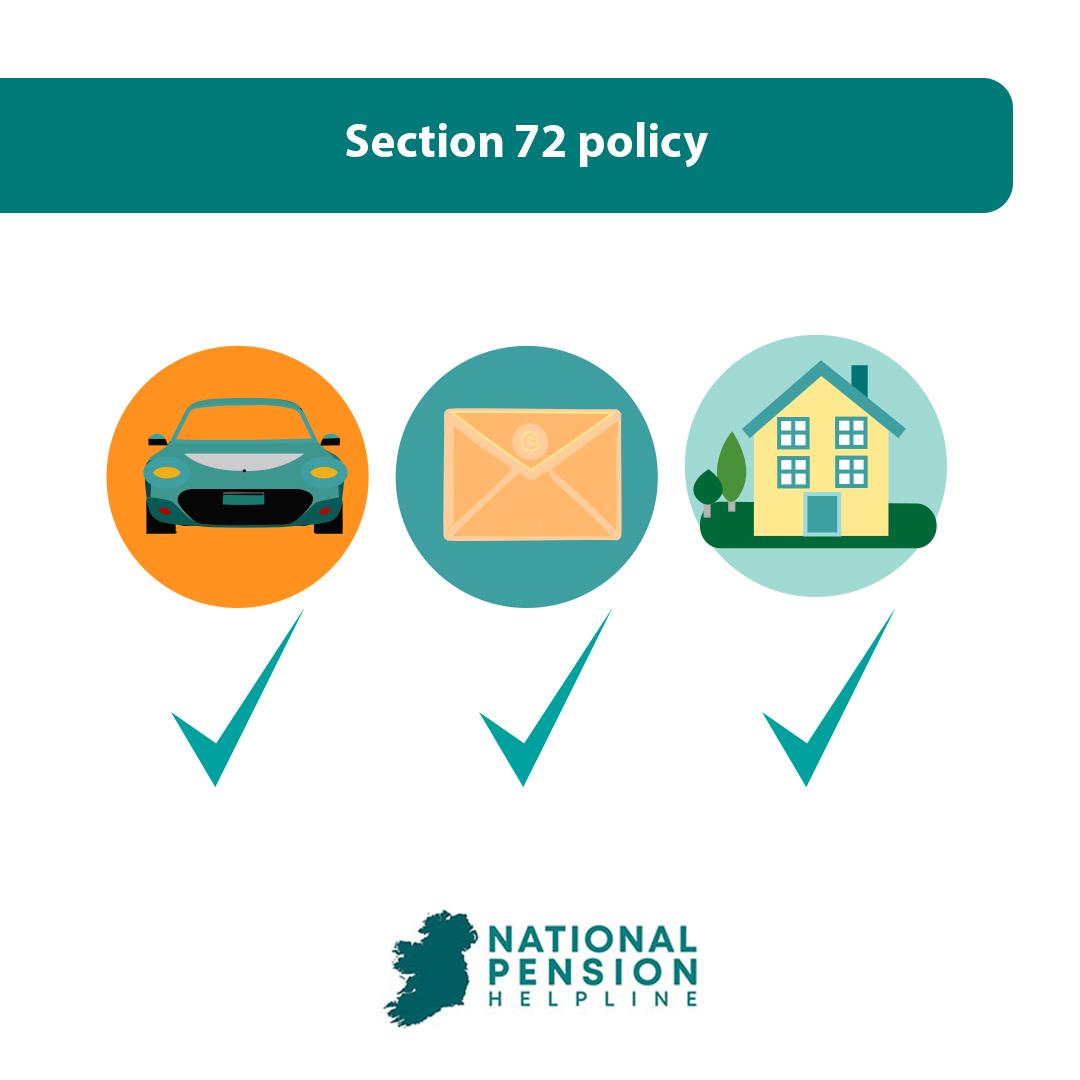
Example:
Let’s say that the proceeds from a section 72 policy are €300,000 and the inheritor’s inheritance tax liability is €250,000.
The section 72 policy proceeds would fully cover the €250,000 tax liability and €50,000 would be left over. In the hands of the inheritor, the €50,000 would be liable to tax (depending on applicable thresholds) at a rate of 33%, which is €16,500.
The reason why section 72 policies are so efficient is because they don’t tend to give rise to an additional inheritance tax liability and, if they do, it’s normally a small residual liability only.
If in the above example the inheritor had received an additional €250,000 from the deceased to cover his/her inheritance tax liability, the liability would be covered, but an additional inheritance tax liability of €82,500 (€250,000*33% – depending on applicable thresholds) would arise on the cash.
TLDR: a section 72 policy is an insurance policy that is set up by an individual who is planning to leave an inheritance in the future. If you’re a parent, this may very well be applicable to you.
The logic is that the individual leaving the inheritance recognises that, upon their eventual death, their chosen inheritor or inheritors will be left with a tax liability – one which they may not be able to afford without selling the inherited assets.
So, the basic premise of a section 72 insurance policy is that when the individual leaving the inheritance dies, the insurance policy will pay out a sum of money that will cover some or all of the inheritor’s tax liability. This achieves two things:
How to take out a section 72 insurance policy?
So how do you go about setting up a section 72 policy? Well, the first step is to ask yourself the following question:
Are you someone who is expecting to receive an inheritance
OR
Are you someone who is expecting to leave an inheritance?
If you’re the former, say, a child expecting to inherit the family home and/or other assets, you might encourage your parents to take out a section 72 policy to cover your inheritance tax liability. The important factor to consider here is that a section 72 policy must be taken out before an individual’s 75th birthday. Once an individual turns 75, a section 72 policy is no longer available. So, from a tax planning perspective, it’s worthwhile having these conversations sooner rather than later.
If you’re the latter, you might seek advice as to whether or not your eventual death will lead to burdensome tax liabilities for your inheritors. If so, you might consider a section 72 policy to alleviate that burden.
Other factors to consider
There are multiple factors which will influence the cost of the insurance premiums to be paid for a section 72 policy. For example, the amount of cover needed, your age, your health and whether or not you’re a smoker. These premiums must be paid by the insured person but they can be covered by an employer provided the payment is treated as a taxable benefit-in-kind. A section 72 policy can be taken out either directly via the life companies, like Irish Life or Zurich, or indirectly via a broker.
Furthermore, section 72 policies can be set up as either single-life policies or joint-life policies. In the case of the single-life policies, the policy will payout on the death of the insured individual. In the case of the joint-life policies, the policy will payout on the death of the second, surviving individual who is insured under the policy. Joint-life section 72 policies can be taken out only by spouses or civil partners.
Lastly, the proceeds from a section 72 policy must be taken no later than one year after the date of death of the insured individual. It’s worthwhile noting that while section 72 policies are designed to cover inheritance tax, there’s no guarantee that the amount of cover provided under the policy will be sufficient to fully cover the tax liability that arises in the future. This is because the inheritance tax liability will depend on the future valuation of the inherited assets which may be materially higher than previously anticipated.
Method 2: Spousal & CAT Threshold
Spousal Exemption
The best and most simplistic method for avoiding inheritance tax in Ireland is to leave an inheritance to your spouse or civil partner.
According to s70 and s71 of CATCA, gifts and inheritances taken between spouses and civil partners are exempt from Capital Acquisitions Tax without limit.
In other words, an Irish CAT liability will not arise where an individual receives an inheritance or gift from their spouse or civil partner.
Building on the first method we discussed, this is why many section 72 policies are set up as joint-life policies, because the going assumption is that upon the death of the first spouse, the bulk of the assets will be inherited by the surviving spouse, which won’t give rise to a CAT liability as per s70 CATCA 2003.
It’s only upon the death of the surviving spouse that a CAT liability might arise for the inheritors and that is what the section 72 policy seeks to cover – hence why joint-life policies make sense for spouses.
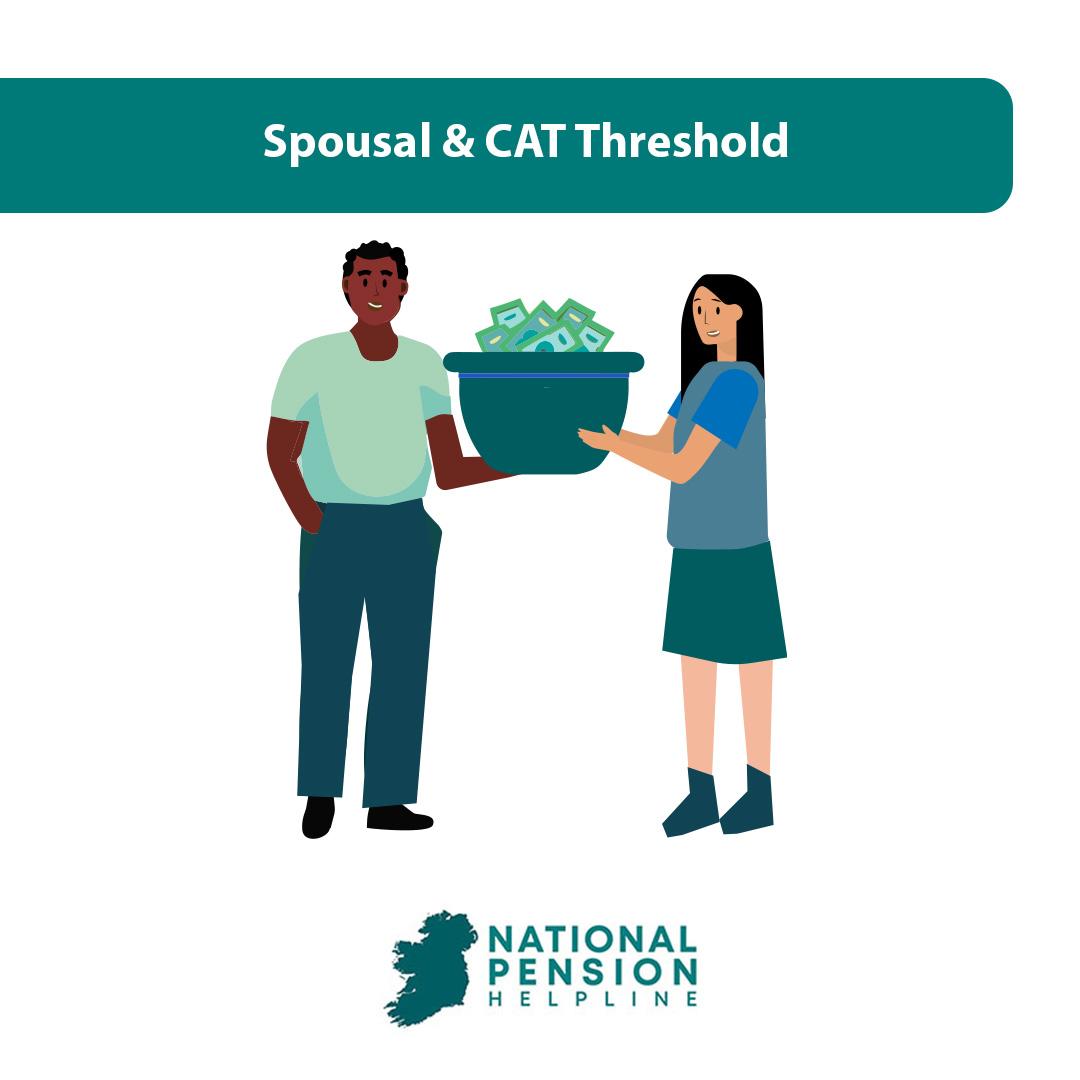
CAT Thresholds
For those inheriting assets from someone who isn’t a spouse or civil partner, the “Capital Acquisitions Tax thresholds” assists in avoiding a tax liability. The basic premise of the CAT thresholds is that you don’t pay tax on a gift or inheritance if its taxable value is below a particular threshold, of which there are three.
Key: each of the three thresholds applies to a different group of people and the threshold which applies to a particular inheritance will depend on who you’re receiving the inheritance from.
The basic concept is that if the value of your inheritance exceeds the applicable threshold, then you must pay tax on the excess value above the threshold. It’s important to note that each of the three thresholds are lifetime thresholds i.e. each gift and inheritance that you receive over your lifetime will reduce the value of your thresholds, and once they’re gone, they’re gone.
Group A, B & C
The three thresholds are represented by groups – Group A, Group B and Group C.
Group A
The Group A threshold most commonly applies to individuals who are receiving gifts or inheritances from their parents and parents who are receiving absolute inheritances from their children. However, other scenarios can arise where Group A is applicable, such as a favourite niece or nephew. The Group A threshold is the largest of the thresholds standing at €335,000. In other words, you can receive up to €335,000 worth of gifts and inheritances from your parents in your lifetime tax free.
For example, if one of your parents died and left you €100,000 in cash, then your Group A threshold would reduce to €235,000 and you’d pay no tax. If, 10 years later, your second parent dies and you’re left with the family home valued at €400,000 then, in that scenario, you’d have an inheritance that exceeds your remaining threshold by €165,000. So, your Group A threshold would go to zero and you’d pay 33% tax on €165,000 which is €54,450 (unless of course your parents had a section 72 joint-life policy to cover this liability).
Group B
The Group B threshold most commonly applies where the individual receiving the inheritance is a brother or sister, a niece or nephew or a grandparent or grandchild of the deceased individual. For parents receiving gifts or limited interest inheritances from their children, Group B will also apply. The Group B threshold is less than 10% of the size of the Group A threshold, standing at €32,500. This is why it can be much more costly for an individual, who isn’t a child of the deceased, to receive a sizable inheritance. You simply have a lower threshold to cover the taxable value of the inheritance.
Group C
Group C is even smaller again at €16,250 and applies to everyone else i.e. cousins, friends and in-laws of the deceased.
The value of the CAT thresholds have changed over time and are likely set to change again in Budget 2025. Like every aspect of the tax legislation, the CAT thresholds and the tax rate applicable to gifts and inheritances are subject to change.
Method 3: Small Gift Exemption
Did you know that you can receive a gift up to the value of €3,000 from any person in any tax year without having to pay Capital Acquisitions Tax?
Theoretically, you could receive €3,000 from every person you know each and every year until you die and you would never have to pay any tax! Oh wouldn’t that be nice!
This is because the Irish tax law allows for an annual small gift exemption equal to €3,000 on a per-person basis.
This presents a tax planning opportunity. Let’s say an individual has a sum of money that they want to leave as an inheritance. Instead of waiting until death, the individual could slowly drip feed the cash to their chosen beneficiary over time by gifting up to €3,000 each year tax free.
This could be taken one step further by having an individual and his/her spouse each give €3,000 to their chosen beneficiary every year, effectively doubling the rate at which benefits are being passed.
The value of this tax planning strategy is twofold:
Method 4: Dwelling House Relief
Perhaps the most sought after question in relation to inheritance tax is the following: “how can I avoid having to pay inheritance tax on the family home?”.
This isn’t surprising as, for most people, the family home will be the single most valuable asset inherited from a deceased parent’s estate. The cleanest way to achieve this outcome is by qualifying for what’s known as Dwelling House Relief.
If you qualify for dwelling house relief, you can inherit a house and that inheritance will be exempt from Capital Acquisitions Tax.
In order to qualify, at the date of the inheritance, the following conditions must apply:
This relief is extremely valuable because it allows you to inherit a home without having to pay a capital acquisitions tax liability and without having the value of the home eat into the applicable CAT threshold.
In practice, individuals who are living at home with their parents are the most likely to qualify for dwelling house relief. As a result of the current housing crisis, claims for dwelling house relief will likely become more common in the years to come.
However, you need to be living in the house as your main home for the three years immediately before the inheritance.
So if you move out at any point in time, even to rent for a short period, you’ll need to move back into the home for a period of at least three consecutive years in order to qualify.
And even at that, there’s obviously no guarantee as to when the inheritance will pass, so you’ll need to remain there until that happens.
Put simply, you need to be living in the home at the time when the individual or individuals pass and you need to have lived there for at least 3 years prior to the passing.
If within 6 years of qualifying for dwelling house relief you sell the home, and you don’t replace it with another home as your main home, then the exemption will be withdrawn.
‘Replacement’ just means that you use the sale proceeds to purchase a replacement home.
If only part of the proceeds are used (i.e. in the case of downsizing) then a partial withdrawal of the exemption will apply.

A call for change
In the opinion of the National Pension Helpline, the conditions for dwelling house relief are too strict.
We would like to see the 3-year rule removed, specifically for individuals who are inheriting the family home.
It’s unfair that individuals who choose to stay at home with their parents should find themselves in a better tax situation than individuals who choose to move out and either rent or buy. This also has the potential to create distortionary behaviour.
One might assume that those who are renting or buying are in a better financial position than those who are still living at home. But in many cases, young people are living in the family home purely because the cost of renting is inflated and because home ownership isn’t desirable.
It’s not necessarily always the case that they can’t afford it, many probably could if they wanted to, they just don’t want to. In fact, many people who are renting are in a much worse financial position than those who are living in the family home.
But yet, by virtue of not living in the family home, the renting individual will find themselves in a less favourable tax situation.
The National Pension Helpline would also like to see a relaxing of the requirement that disallows having another home ownership interest. Just because you “own a home” doesn’t mean that you own the home. Take first-time buyers for example. Most first-time buyers will only have a 10% equity stake in their property when they purchase it.
The other 90% is funded through the mortgage i.e. debt. Is it really fair for one individual to inherit a family home tax-free because they live at home and don’t own another property, while another individual receives a taxable inheritance of the family home just because they moved out last year and put a €40,000 deposit into a property? Probably not.
The biggest issue with this relief is that it’s too black and white – the conditions don’t go far enough to consider the wide multitude of scenarios that different inheritors with different financial situations can find themselves in – and we would like to see that changed.
Method 5: CAT Reliefs
A much smaller percentage of the Irish population will need to consult the more complex reliefs from CAT (Capital Acquisition Tax) such as Business Relief and Agricultural Relief. These reliefs can reduce the taxable value of gifted or inherited business property and agricultural property by 90%. If you are someone who expects to receive a gift or inheritance of a business, a share in a business, shares in a company carrying on a business or agricultural property, then you may qualify for one of these reliefs. If you were to qualify for one of these reliefs you could significantly reduce the value of your Capital Acquisitions Tax liability.
To find out more about business relief and agricultural relief check out Revenue’s website.
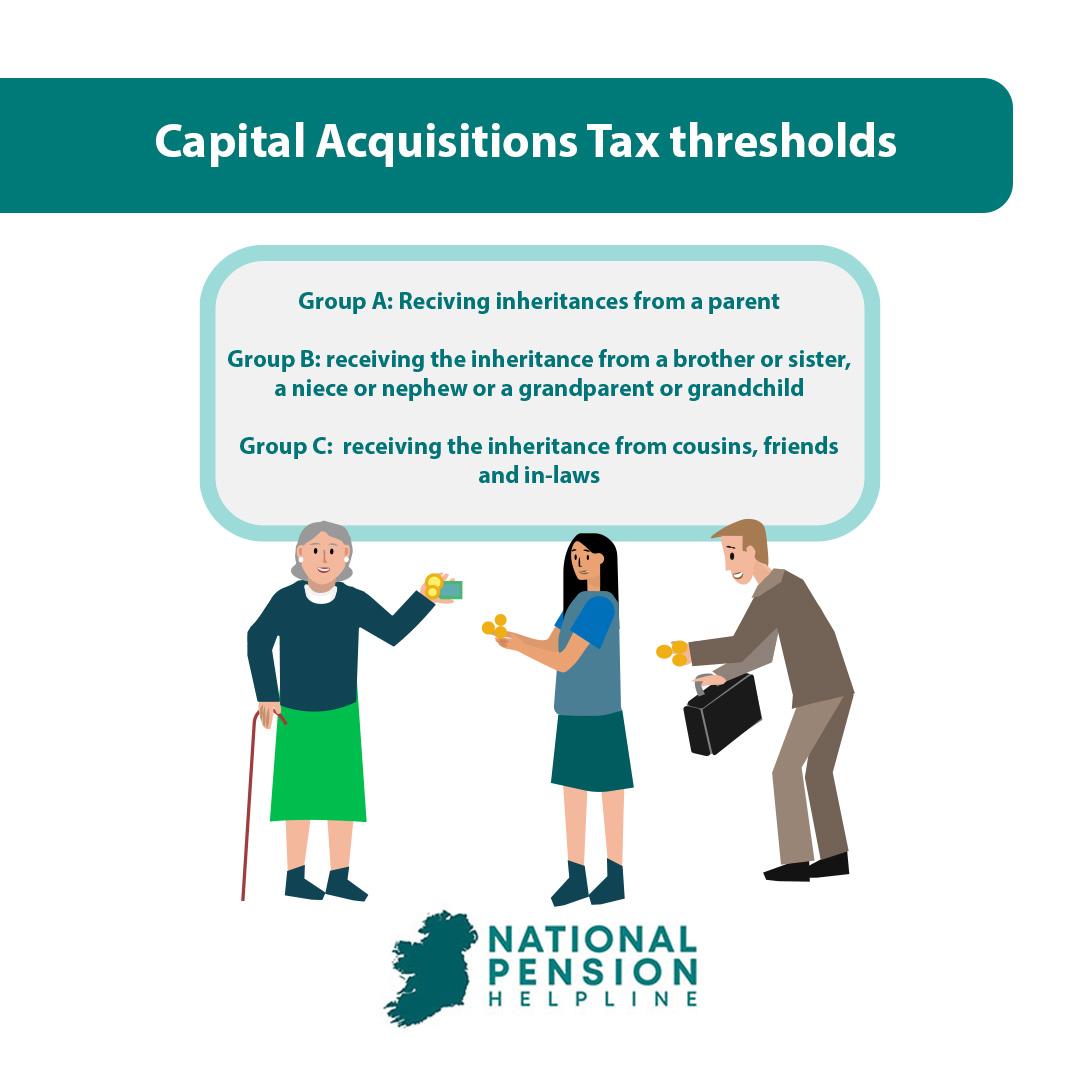
Conclusion
Like all taxes, Capital Acquisitions Tax and all of the rules and regulations surrounding it are in a constant state of change. Given that this tax will likely affect many of us throughout the course of our lives, it’s important that we’re aware of how it operates and, most importantly, how we can efficiently navigate it. This article has provided you with five ways to avoid inheritance tax in Ireland. Stay tuned for more updates about Irish CAT post-Budget 2025.
